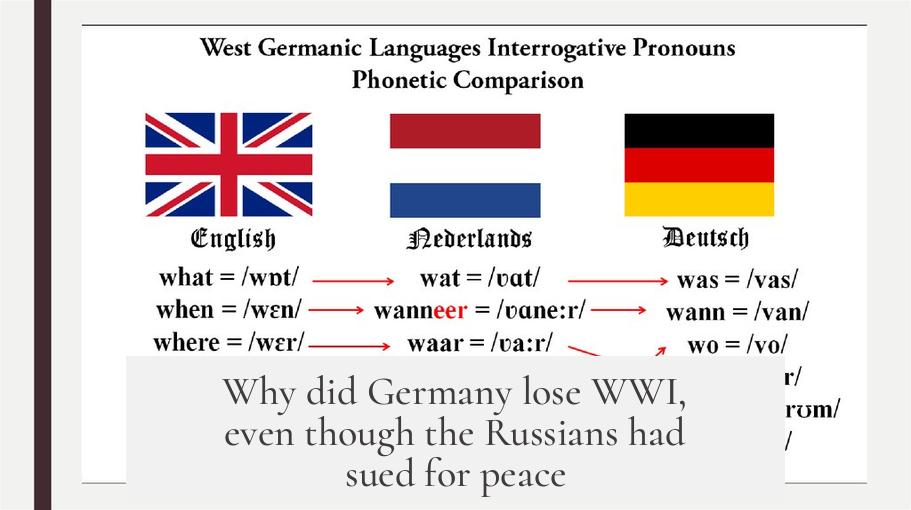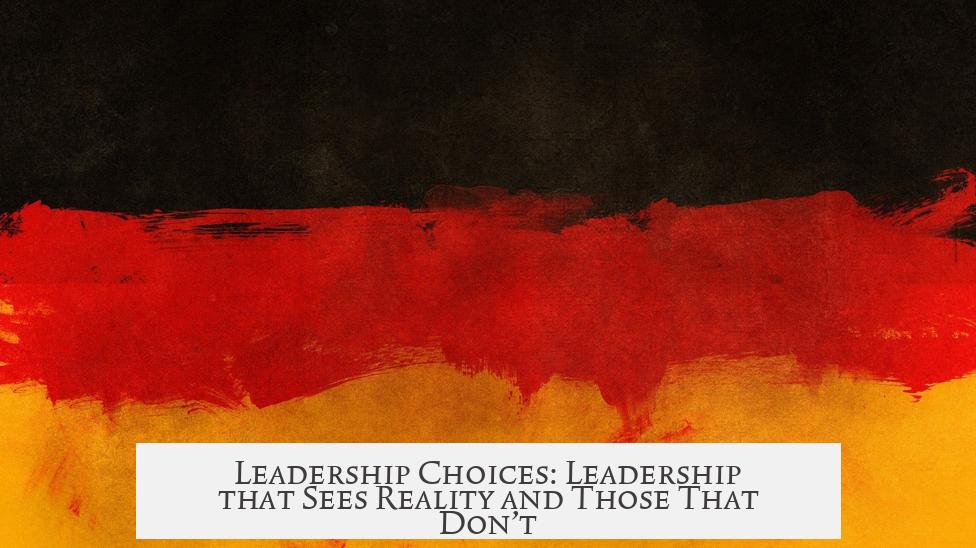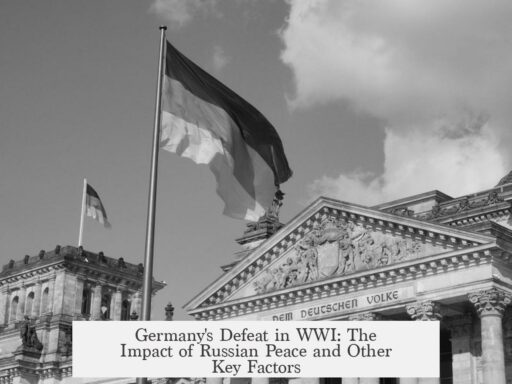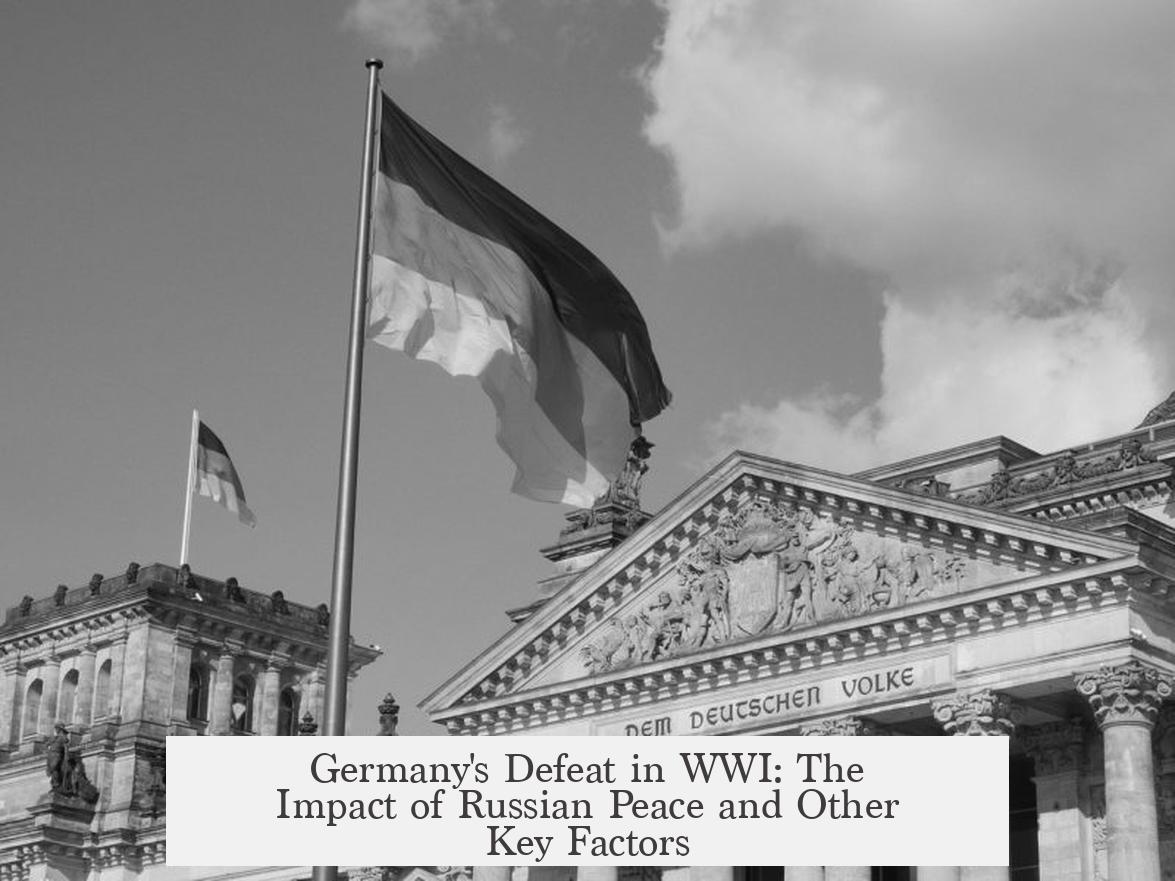Germany lost World War I despite Russia suing for peace due to multiple interlinked factors including economic strain, resource shortages, military failures, external pressures, internal instability, and leadership errors.
When Russia exited the war after the Treaty of Brest-Litovsk in March 1918, Germany gained valuable territory but could not translate this into a decisive victory. The Eastern Front’s collapse freed German troops but intensified challenges on the Western Front and revealed deeper vulnerabilities.
Germany’s economy was built for a short war but dragged into a prolonged conflict. It relied heavily on borrowing, with war debt rising by 379%, surpassing France’s 242% increase. By war’s end, 90% of the ordinary budget paid interest on debt alone. The economic model was unsustainable.
Liquidity, the ability to sell goods at intended value, was initially a strength but deteriorated over time. Germany failed to adjust financial policies—refusing harsh taxation or interest rate hikes to curb overspending and overproduction. The government’s solution, the Darlehenskassen system, promised attractive short-term investment but backfired. It raised bonds tenfold beyond authorization, primarily purchased by local governments, pushing businesses away and failing to improve liquidity.
The British naval blockade strangled Germany. Food shortages were acute. Civilians received only a third of grain supplies, consuming drastically low amounts of meat, fish, and eggs. Starvation and malnutrition were rampant, hindering factory workers and soldiers alike. Agriculture depended on nitrate imports from South America, halted by the blockade. Winter 1916–1917 became the infamous “Turnip Winter.” By late 1918, even troops lacked adequate food.
Material shortages intensified. Every scrap of metal was repurposed for weapons. Church bells, pipes, and household items melted for artillery production. By war’s end, metal supplies neared exhaustion.
Naval morale collapsed along with resources. In late 1918, German sailors mutinied instead of launching a suicidal attack to break the blockade. Mutiny spread swiftly, undermining military coherence and sparking wider unrest in cities, often led by radical leftist groups.
Militarily, Germany’s 1918 Spring Offensive initially gained ground, advancing up to 60 miles in places. It was the deepest push since 1914, threatening Paris and Britain. Yet the offensive overstretched supply lines and cost 750,000 to 1,000,000 troops—many elite stormtroopers.
German forces failed to consolidate gains or neutralize strongpoints, opting for rapid advances unsustainable with depleted manpower. Allied counterattacks, the Hundred Days Offensive, crushed the Hindenburg Line and forced German retreats. This marked a turning point, reversing years of stalemate and decimating German defenses.
Germany also lost the arms race. Allies produced thousands of tanks and planes; Germany managed only about 20 tanks and far fewer aircraft of any efficacy. This growing technological gap further eroded German battlefield effectiveness.
The entry of the United States intensified the pressure. By mid-1918, 10,000 fresh American troops landed daily in France, replenishing Allied ranks. Germany’s failed offensives and dwindling manpower contrasted sharply with this influx. Germany’s unrestricted submarine warfare aimed to starve Britain but backfired by dragging the US into war, sealing Germany’s fate.
Germany’s allies collapsed in 1918. Bulgaria capitulated, Austria-Hungary disintegrated amid internal revolts, and the Ottoman Empire surrendered. This left Germany isolated on multiple fronts, including hostilities with Italy. Fighting a multi-front war became untenable.
Internally, Germany suffered war exhaustion and declining morale. Food shortages, military defeats, and growing political unrest culminated in the November 1918 German Revolution. Left-wing radicals gained momentum amid discontent, weakening government control.
Leadership failures were significant. Kaiser Wilhelm II recognized defeat and opted for surrender, contrasting with later leaders who pursued futile resistance. General Erich Ludendorff prolonged the conflict through risky strategies, including backing Lenin to destabilize Russia, ironically losing Germany its key ally and contributing to its eventual downfall.
| Factor | Effect on Germany’s Defeat |
|---|---|
| Economic Strain | Unsustainable debt, liquidity crises, failed financial policies reduced war capacity |
| Blockade and Resource Shortages | Severe food and material scarcities crippled civilians and military efforts |
| Military Failures | Failed offensives, casualty imbalance, loss of technology advantage |
| External Pressures | US troop influx and ally collapses isolated and overwhelmed Germany |
| Internal Instability | War exhaustion and revolutionary unrest undermined home front stability |
| Leadership Errors | Poor strategic choices and inability to negotiate earlier surrender |
- Germany’s short-war economic model collapsed under prolonged conflict demands.
- The British blockade caused critical food and material shortages.
- Military offensives exhausted troops and failed to secure lasting gains.
- US entry and collapse of allies isolated Germany strategically.
- Revolutionary movements and war fatigue destabilized the home front.
- Leadership decisions recognized defeat but came too late to change the outcome.
Why did Germany lose WWI, even though the Russians had sued for peace?

The short answer is: Germany LOST because winning required more than just taking one front offline. The Russian exit eased pressure in the East but did nothing to fix Germany’s mounting problems at home, with the Allies on other fronts, or with their own dwindling resources and morale. Now, let’s unpack this fascinating and complex episode in history that often leaves people scratching their heads.
So, Russia sued for peace in 1917, taking the Eastern Front off Germany’s plate. It must have been a relief, right? Well… sort of. But the victory on that front turned out to be a classic example of “One door closes, another nightmare flies in.” Germany had planned a quick war back in 1914, but by 1918 their strategies and resources resembled a crumbling house of cards.
Economic Factors: The Spending Spree That Broke the Bank
Germany entered WWI expecting a short, sharp shock. What did they do? Borrow—a lot. Fast borrowing was their game plan to fund rapid troop mobilization and keep the war machine ticking. France expanded its credit by 242%, Europe’s classic gamble. Germany went further—379% expansion, from 4,508 million marks to 17,126 million. That’s like maxing out your credit card on day one, expecting a raise tomorrow that never comes.
With 90% of their budget tied up in interest payments on these war debts by war’s end, there was zero wiggle room. This financial straitjacket choked every aspect of the German economy.
Liquidity, or the ability to sell goods at their intended value, was Germany’s initial prowess in 1914 but slipped badly by 1918. Instead of tightening the belt, raising interest rates, or cutting back production, Germany kept overproducing and overspending. Picture a runner sprinting with untied shoelaces—fast but destined to trip.
The notorious Darlehenskassen scheme, meant to stabilize finances by offering bonds with higher interest rates but shorter deposits, spiraled out of control. Instead of aiding business liquidity, it hoarded bonds mainly in local government hands (75%), shooing away vital business investments. This backfired dramatically.
Blockade, Starvation, and Resource Drain: The Noose Tightens
Germany found itself smashed in a vice—the British naval blockade strangled imports, most notably nitrates from South America, essential for agriculture and explosives. No nitrates, no fertilizer, no crops. The infamous Turnip Winter of 1916/17 vividly illustrates Germany’s plight. Civilians received only one-third of the grain, and meat consumption plummeted to 15% of pre-war levels. Fish and eggs? Even less.
One chilling fact: German workers literally starved on the job in factories. Dysentery and malnutrition were common, and fights over minuscule amounts of bread spilled into violence. This was not mere discomfort; it was collapse in action.
Metal became a precious commodity. German society conducted nationwide scrap drives, melting church bells, guardrails, pots, and pans to repurpose into weaponry. The country was bare-bones by 1918.
Then the navy mutinied. When ordered to launch a desperate last charge to break the blockade, sailors refused and revolted in cities nationwide, emboldened by left-wing radicals and mutinous soldiers. The military machine was buckling under pressure on multiple levels.
Military Endeavors: The Final Gambles That Fell Flat

The Spring Offensive of 1918 showed Germany’s grit. After years of grinding stalemate, they launched a bold attack aiming for a decisive breakthrough against the British and French. Gains were impressive on paper—trench lines pushed back 60 miles in places, the biggest front shift since 1914. It was the greatest single assault since the war’s start, but at what cost?
Germany lost between 750,000 and 1,000,000 men between March and July, including elite Sturmtruppen. The soldiers were overtaxed, had outrun supply lines, and simply couldn’t hold the captured land. Instead of consolidating, commanders pressed forward in a mad dash for Paris, sidestepping entrenched strongpoints that could have been neutralized. The offensive exhausted German forces instead of breaking the Allies.
As the offensive sputtered, the Allies retaliated with the Hundred Days Offensive in mid-August, smashing through the Hindenburg Line and driving German forces out of France. Germany’s battle-hardened troops were outnumbered, and their equipment couldn’t keep up. In terms of technology, they lost the arms race badly. While Allies churned out thousands of tanks and aircraft, Germany produced only around 20 A7V tanks and fell far behind in air power.
External Factors: America Changes the Game, Allies Crumble
One cannot overstate the impact of America’s entry. After German U-Boat unrestricted warfare provoked the U.S. entry in 1917, 10,000 fresh American troops landed in France daily. This influx replenished depleted Allied ranks, gradually turning the tide.
Meanwhile, Germany’s allies were collapsing. Bulgaria quit in 1918. Austria-Hungary faced internal unrest, ethnic fractures, and abdication by Emperor Charles I. The Ottoman Empire was besieged and collapsing from internal revolts and British pressure. Germany stood increasingly isolated.
Even fighting a war on two fronts was a stretch, but Germany faced a *three-front* war: Russia out, but Italy attacking in the south, British and French in the west, and sporadic unrest and conflict everywhere. It was a military and logistical nightmare.
Internal Instability: A Nation Running on Empty
The term “war exhaustion” sums up the German mood. After four years of bread lines, casualties, and endless fighting, morale crumbled. The Kaiser’s government lost grip domestically. Radical ideas inspired by the Russian Revolution fanned flames of rebellion on German soil.
The German Revolution in late 1918, ignited by food shortages and ideological influence from Soviet Russia, led to dramatic political upheaval. The monarchy collapsed, making continued war effort impossible.
Leadership Choices: Leadership that Sees Reality and Those That Don’t

Kaiser Wilhelm II could admit defeat. Unlike future leaders like Hitler, Wilhelm understood the futility of a protracted war with shrinking resources and mounting enemies. The decision to surrender was pragmatic—a painful but necessary truth.
Fun fact: General Erich Ludendorff, a key German strategist who financed Lenin’s return to Russia (helping destabilize Germany’s eastern rival), ultimately lost his own country. Sometimes, even brilliant but short-sighted decisions backfire spectacularly.
Putting It All Together: The Russian Peace Was a Pyrrhic Victory
So, why didn’t Russia’s exit-from-war guarantee a German victory? Because peace with one enemy doesn’t secure victory when multiple other factors are eroding your position. Germany’s unsustainable economic policies collapsed under their own weight. The blockade strangled supplies and crippled civilian and military morale. Their military gambles, though temporarily promising, drained their best men and resources. The Allies’ industrial and manpower superiority, boosted dramatically by the US, proved decisive.
Blockades, economic mismanagement, resource depletion, mutinies, and a revolution at home crippled Germany from within. The spring offensive, their last big hope, exhausted their best troops without decisive victory. The Allies’ counterattack finished what was left hanging.
Germany lost WWI not because of Russia suing for peace but because peace on one front didn’t fix the systemic crises on all the others. It’s like locking one room of a house on fire while the rest burns down—a strategic but shallow relief.
What Can We Learn?
- Short-term plans lead to long-term collapse when the problem is strategic and multi-faceted.
- Economic health is as vital to war efforts as battlefield victories. Germany’s borrowing binge and liquidity problems sealed their fate.
- Material shortages and blockades can drive entire countries to collapse from within.
- Morale matters. A nation with starving people and mutinous troops is not a winning nation.
- Leadership that can admit defeat prevents worse disasters but also marks the end of war efforts.
Looking back, it’s clear Germany’s 1914 gamble failed to account for a drawn-out war. The Russian peace treaty was a sigh of relief, not a signal of victory. Germany’s defeat was baked into the complex stew of economics, military decisions, resources, external events, and internal strife.
“Victory is always possible for the person who refuses to stop fighting,” said Napoleon. But in this case, Germany had to stop—and accept defeat.
So next time someone asks why Germany lost WWI even though Russia sued for peace, remember: War isn’t just about one front or one treaty. It’s a long, exhausting, multi-layered game where logistics, leadership, resources, and morale all count.
What do you think was the most underestimated factor in Germany’s defeat? Was it the blockade starving the nation, or perhaps the failure of leadership strategy? Share your thoughts and let’s dive deeper!




